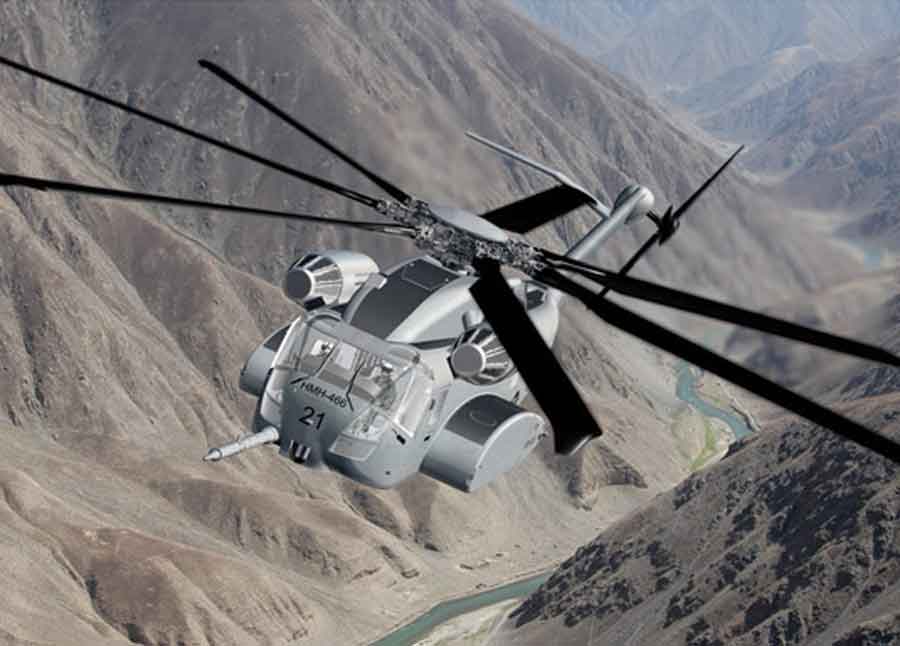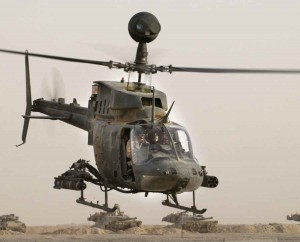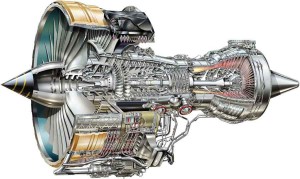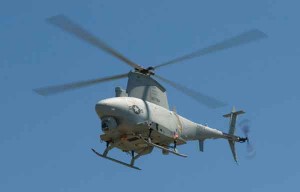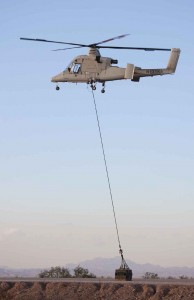Europe
Established in 1992, the Franco-German-Spanish Eurocopter Group is a division of European Aeronautic Defence and Space company (EADS), itself a world leader in aerospace and defence-related services. EADS has invested millions of dollars in developing an armed helicopter for a possible US Army competition. EADS is exploring joint deals and other possible competitions and would invest its own funds to develop new systems to meet US military needs.
Sikorsky has proposed a new CH 53K super Stallion helicopter to be operational by 2019…
It announced recently that it would work with Boeing on future heavy-lift helicopters to meet US Army and European needs. EADS invested heavily in developing two variants of its UH-72A Lakota Light Utility Helicopter as a new armed aerial scout for the Army, hoping to leverage its on-time, on-cost delivery of 240 UH-72A helicopters. It estimates the new armed helicopter could generate $2.5 to 4 billion in revenues in coming years if the US Army decides to launch a competition to replace its aging OH-58 Kiowa Warrior helicopters instead of upgrading and fixing them at a cost of $13 to 15 million.
Other companies interested in participating in the possible Army competition include AgustaWestland, a unit of Italy’s Finmeccanica SpA and Textron’s Bell Helicopter. Eurocopter is developing a fuselage segment for a proposed Future Transport Helicopter (FTH). It believes the FTH could meet requirements of the French and German armies. The proposed aircraft would have a 33-tonne maximum take-off weight, including 15 tonnes in the cargo hold or an under-slung load of 18 tonnes.
Eurocopter and Boeing have signed a Memorandum of Understanding (MoU) to cooperate on the FTH initiative. Indeed, potential helicopter demand in the US and Europe is bringing major players together to share the risks and rewards of the future military helicopter market. Traditional rivals Boeing and EADS have signed an MoU to jointly explore rotorcraft opportunities globally. Boeing would bring its tandem-rotor technology to the project, while Eurocopter’s contacts with the French and German militaries, would enhance the viability of the joint entity. The MoU was followed by a specific agreement to examine options for the potential heavy-lift rotorcraft program in Europe, the notional target for which is 32-tonne payload.
As mentioned earlier, the Pentagon is also funding research to support a heavy-lift helicopter programme, but a firm timeline and funding have been lacking. The Boeing-EADS project would compete with Sikorsky who is planning a platform larger than the CH 53K. The Luftwaffe is poised to assume oversight of the heavy-lift effort from the army on January 01, 2013. Meanwhile, Northrop Grumman and AgustaWestland have teamed up to offer the AW101 platform for the US Air Force Combat Rescue Helicopter (CRH) project and the Marine Corps presidential helicopter replacement. Northrop Grumman has limited experience on helicopters but is expecting to gain from the partnership with AgustaWestland who in turn, needed a US collaborator. Meanwhile, Lockheed Martin and Sikorsky have teamed up to pursue the CRH and Marine One projects.
The Eurocopter Military Support Centre, Germany is carrying out a comprehensive upgrade of 40 Bundeswehr CH-53G helicopters to the CH-53GA specification. Eurocopter has recently delivered the first production version of the modernised CH-53GA to Bundeswehr. The CH-53GA is equipped with state-of-the-art avionics and communications systems. The new helicopter is expected to provide the German military with modern craft with a lifeline up to 2030.
X-3, Eurocopter’s ‘high-speed long-range hybrid helicopter’ is being projected as a future option…
Meanwhile, X-3, Eurocopter’s ‘high-speed long-range hybrid helicopter’ is being projected as a future option. In place of the tail rotor is a set of propellers for forward motion. Stephen Mundt, Vice-President, Business Development for Eurocopter’s US division, EADS North America, has expressed the hope that the X-3 vertical-lift technology could possibly replace the Apache, Cobra, Black Hawk and Huey designs currently in use. The aircraft can accelerate and decelerate in level flight and its propellers allow a 40-degree climb at 3,500 feet per minute. It can also bank up and down at hover through a range of 40 degrees. The X3 is one of only two hybrid aircraft that have flown under ‘high-hot’ circumstances with fixed-wing airplane-like speed and the hover and manoeuvrability of a traditional rotorcraft. ‘High-hot’ refers to the Army’s preferred performance requirements that its future helicopters fly at 6,000 feet at 95 degrees Fahrenheit. The other is Sikorsky’s X-2; the difference is that the X3, instead of a single ‘push’ propeller, has two forward-facing propellers suspended out and downward from the base of the main rotor by short wings.
Bio-fuels
The first military helicopter to fly on bio-fuel was an Apache AH 64D of the Dutch Royal Air Force. One of its two engines was run on a mixture of fossil-based kerosene and bio-kerosene. The demonstration flight came last year after months of preparation and collaboration between Boeing, Honeywell UOP, SkyNRG, NLR, Ingrepro, KLM and General Electric. Environmental and political group pressures are pushing aviation towards greener fuels and worldwide military planners appear to be heeding this aspect too.
US Air Force proposes to fly 50 per cent of its aircraft using alternative energy sources by 2016, while the US Navy and Marine Corps want to do so by 2020. However, there is a hitch. Bio-fuels are currently more expensive to produce than aviation fuel due to a problem of economies of scale. Several companies in the US, including some traditional military contractors such as General Atomics and Honeywell, are investing in bio-fuel projects hoping that they can produce affordable renewable energy. DARPA is placing its bets on algae as the feedstock, according to the report. Its investments are classified, but the agency predicts that fuels based on that technology will be cost competitive by 2016. Less optimistic projection however, puts the time back to 2020. Besides the price, the bio-fuel would have to match the other military specifications (freezing and flash point) before it can find favour with military helicopters in the future.
Unmanned Military Helicopters
DARPA and the US Army conducted the Uninhabited Combat Armed Rotorcraft (UCAR) in 2003-2004 to develop an unmanned combat helicopter. Originally named the ‘Robotic Rotary Wingman’, a requirement was issued in the spring of 2002, specifying a robot rotorcraft to be armed with missiles, unguided rockets, guns and non-lethal directed energy weapons, and with the capability of attacking masked targets. Two finalists, Northrop Grumman and Lockheed Martin were selected in the summer of 2003 to come up with a detailed design. Ironically, neither company had ever built a full-production rotorcraft.
The Northrop Grumman design used the twin-two-blade-rotor ‘eggbeater’ scheme usually associated with Kaman helicopters. In fact, Kaman has teamed with Northrop Grumman on the project while the Lockheed Martin design used a four-blade rotor with a No Tail Rotor (NOTAR) jet exhaust in the tail to cancel torque. The US Army pulled out abruptly in 2004 citing more immediate demands on aviation funding. However, the unmanned Kaman K-MAX helicopter has successfully demonstrated resupply missions in Afghanistan lifting 2.7 tonnes. Subsequently, US Marines deployed the rotorcraft in Afghanistan with gratifying results. The success is a portent of more unmanned military helicopters in the future.
The US Navy plans to add Northrop Grumman MQ-8B Fire Scout in an offensive role with eight to fourteen 70 mm rockets on board (it is already flying in surveillance and reconnaissance roles, using cameras and sensors mounted in its nose). The new version is expected to enter service in 2013 and looks set to pave the way for more unmanned military rotorcraft. US Army and Navy are jointly working on unmanned programmes. Northrop Grumman’s Fire-X unmanned helicopter, based on the Bell 407 template, is one of the candidates for future requirements. Turkey has also produced a small unmanned helicopter, called the Mosquito, for anti-insurgency roles.
The future of airborne weapon platforms does not only belong to the large, but to the very small as well. The Nano Air Vehicle (NAV) program has an objective of making small airborne vehicles which could be utilised in a variety of applications, including both indoor and outdoor missions. The object is to develop an aircraft smaller than 15cm in length and 20gm in weight. Videos area available on the internet of a small robotic hummingbird developed as part of the programme. In the case of nano drones, domination of the sky may mean that military helicopters would all become invisible to the enemy.
Indian Scenario
During October 2012, the Defence Ministry asked the National Security Adviser to mediate in the long standing Army-Air Force debate about the ownership of attack and medium-lift helicopters. The Army has for long been contending that these helicopters were mainly used for its operations and that they were needed to be under command and control of the Army. Finally, the Defence Ministry decided that the Army should get the attack helicopters. The decision served to bring into limelight the fact that the huge Army and the large Air Force both had proportionately insignificant helicopter strength. One of the reasons is the inability of indigenous aviation industry to produce a single military helicopter worthy of note and suited to the Indian military. This is despite the enormous funds poured into R&D and infrastructure.
The future of airborne weapon platforms does not only belong to the large, but to the very small as well…
This author cannot resist the temptation to make a prescriptive comment. Consider that all the helicopter production infrastructure is privatised (all the private companies named above in the US and European context should be enough inspiration). Further consider that, instead of meeting all the services and civil requirements with one ‘Jack-of-all-trades’ machine, this new entity concentrates on one niche area from among heavy lift, attack role, recce, surveillance or unmanned rotorcraft. India has the technological background to excel in any of these areas. It is within the realm of possibility then, that India can hop-step-and-jump to the leading edge in that niche area of military helicopter development. Foreseeable obstacles to this dream scenario are the HAL’s strong lobby which will definitely work towards stumping any such initiative and the government’s pre-occupation with security which may keep private entities from working on military projects.
Conclusion
Regrettably, the advances in helicopter design have not been as impressive as for fighter aircraft. This is despite the fact that helicopters have been utilised in every conflict situation and despite the availability of technology to permit generation leaps in helicopter design. Rising costs and lowering priorities of helicopter development projects have also meant digression from lofty doctrines seeking air mobile manoeuvring groupings and autonomous helicopter forces. However, combat and tactical mobility roles of the military helicopter preoccupy land forces. The presence of military helicopters on the battlefield is essential as is their logistical applications. While the ongoing and foreseeable helicopter projects can be seen as positive steps in the direction of military helicopter development, the possibility of single platform designs tailored for specific roles appears to be remote, at least in the foreseeable future.




